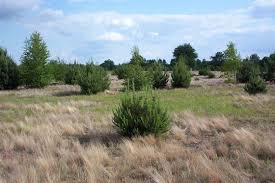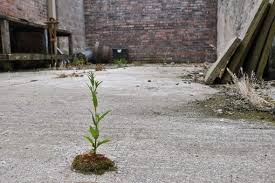This is an orderly and progressive replacement of one community by another till the development of a stable or climax community in a particular area is termed biotic or ecological succession. It can also be seen as the change in either species composition, structure, or architecture of vegetation through time.
Vegetation has three important aspects that are subject to change. Species composition includes the roster of the species. There can be many or few species in vegetation.
Structure refers to the absolute and relative abundances and other relationships of the species constituting the community. The total number of individuals of each species, or the rank order of abundance of the different species are examples of vegetation structure.
Types of Ecological Successions
Primary Succession and Secondary Succession.
1. Primary Succession
This is the type of succession that occurs where community has never existed before. In other words Primary succession occurs in essentially lifeless areas regions in which the soil is incapable of sustaining life as a result of such factors as lava flows, newly formed sand dunes, or rocks left from a retreating glacier.
In this succession, the first biotic lives to be seen are the lichens. It takes about a thousand (1000) years for this type of succession to attain climax.
2. Secondary Succession
This succession occurs in an area where community has already existed before, just like the primary succession, grasses, shrubs and weeds are the organisms to first colonize the secondary succession. It is typified by smaller-scale disturbances that do not eliminate all life and nutrients from the environment.

It takes about 50 – 100 years for a climax community to be formed in grassland and over 200 years for a forest to reach climax community.
Process of Biotic Succession
The process of succession always starts on a bare land and involves following sequential events:
Migration: It is transport of spores, seeds or other structures of propagation to the bare area
Ecesis: It is successful germination of propagules into the bare area. The germination of seeds and spores produce new seedlings or new plants. As a result, some individuals of species are established in the bare area.
Read Also : Factors Influencing Soil Moisture
Colonization and Aggregation
In this stage, the plants that had established themselves multiply and form colonies or aggregate into small or large groups.
Competition: When number of these individuals increases many fold in a given area, they enter into intra-specific and inter-specific struggle. This results in the elimination of unsuitable or weak plants and animals. They start showing various types of interactions.
Invasion: New varieties of plants and animals migrate into this area and establish themselves in spaces created due to elimination of weaker plants. This is called invasion.
Reaction: New migrants interact with the existing plants. This is called reaction.
This leads to a changed environment. The changed environment becomes unsuitable for the existing community. Under environmental pressure, the community also changes or gets replaced by better adjusted species.
Stabilisation
This is the final stage of biotic succession. The terminal community becomes more or less stabilised in the environment and remains in equilibrium with climatic and other environmental conditions of that area. The stabilised community is called climax community.
In summary, the term “succession” was coined when ecologists assumed that one community of plants gave way to another. Hence, communities succeeded one another. However, we now understand that communities may not always be discrete and that they may blend into one another gradually through time.
In addition, there may not be a fixed sequence of species that necessarily has to occur in a region. General tendencies in succession may appear, although the trends are often probabilistic and flexible.
It can also be seen as the change in either species composition, structure, or architecture of vegetation through time. Vegetation has three important aspects that are subject to change. Species composition includes the roster of the species.
There can be many or few species in vegetation. Structure refers to the absolute and relative abundances and other relationships of the species constituting the community.
Read Also : Soil Conservation: Meaning, Categories and Soil Management Practices

